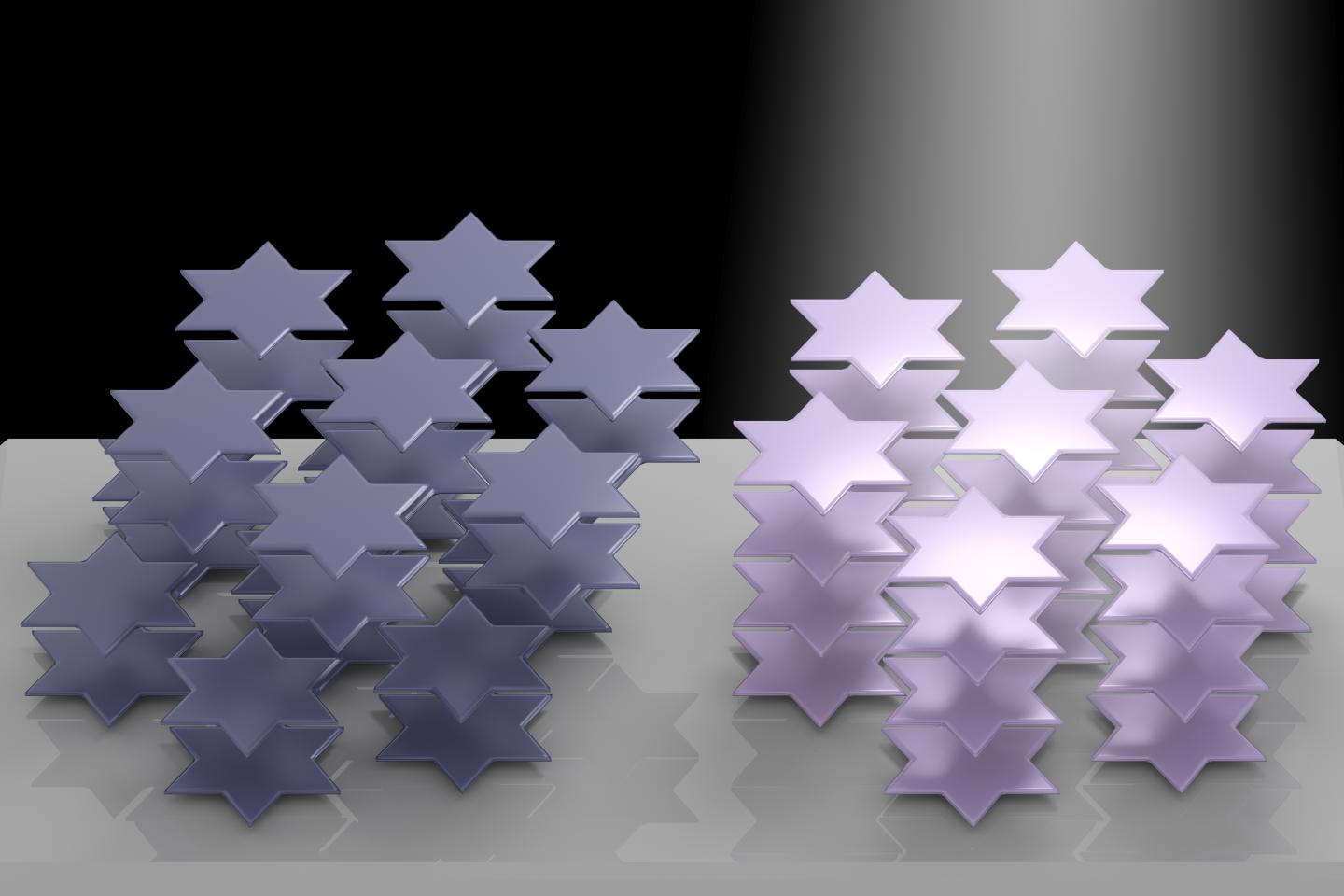Ambient light alters refraction in 2D Semiconductor

Using TaS2, Rice researchers find effect that could aid 3D displays, virtual reality, and self-driving vehicles
Microscopic crystals in the compound semiconductor TaS2 could have a starring role in 3D displays, virtual reality and even self-driving vehicles, according to research in the American Chemical Society journal Nano Letters.
Gururaj Naik and graduate student Weijian Li at Rice's Brown School of Engineering have found that a 2D array of TaS2 has unique optical characteristics that can be controlled in ambient conditions and under general illumination .
When they used sticky tape to pull a 2D sliver off a bulk sample of TaS2 and shined light on it, the layered material rearranged the charge density waves of electrons that flow through, altering its refractive index. Light emitted along the affected axis changed its colour depending on the strength of the light that goes in.
"We need an optical material that can change the refractive index for applications like virtual reality, 3D displays, optical computers and lidar, which is necessary for autonomous vehicles," said Naik, an assistant professor of electrical and computer engineering. "At the same time, it has to be fast. Only then can we enable these new technologies."
TaS2, a semiconducting, layered compound with a prismatic metal centre, appears to fit the bill. The material is already known for harbouring charge density waves at room temperature that allow adjustments to its electrical conductivity, but the strength of light input also changes its refractive index, which quantifies the speed at which light travels through. That makes it tuneable, Naik said.
When exposed to light, the tantalum layer reorganises into a lattice of 12-atom stars, like the Star of David or sheriff's badges, that facilitate charge density waves. How these stars are stacked determines whether the compound is insulating or metallic along its c-axis.
It turns out that also determines its refractive index. Light triggers the stars to realign, changing the charge density waves enough to affect the material's optical constants.
"This belongs to a class of what we call strongly correlated materials, which means the electrons strongly interact with each other," Li said. "In this case, we can predict the properties that show a strong response to some external stimulus."
That the stimulus is as mild as ambient white light is a plus, Naik added. "This is the first material we've seen where the interaction of light happens not just with single particles, but with a collection of particles together, at room temperature," he said. The phenomenon appears to work in TaS2 as thin as 10 nanometers and as thick as a millimeter, he said.
"We think this is an important discovery for those who study strongly correlated materials for applications," Naik said. "We show light is a very powerful knob to change how correlation extends in this material."
'Large Optical Tunability from Charge Density Waves in 1T-TaS2 under Incoherent Illumination' by Weijian Li and Gururaj V. Naik; Nano Lett. 2020, August 20, 2020


































